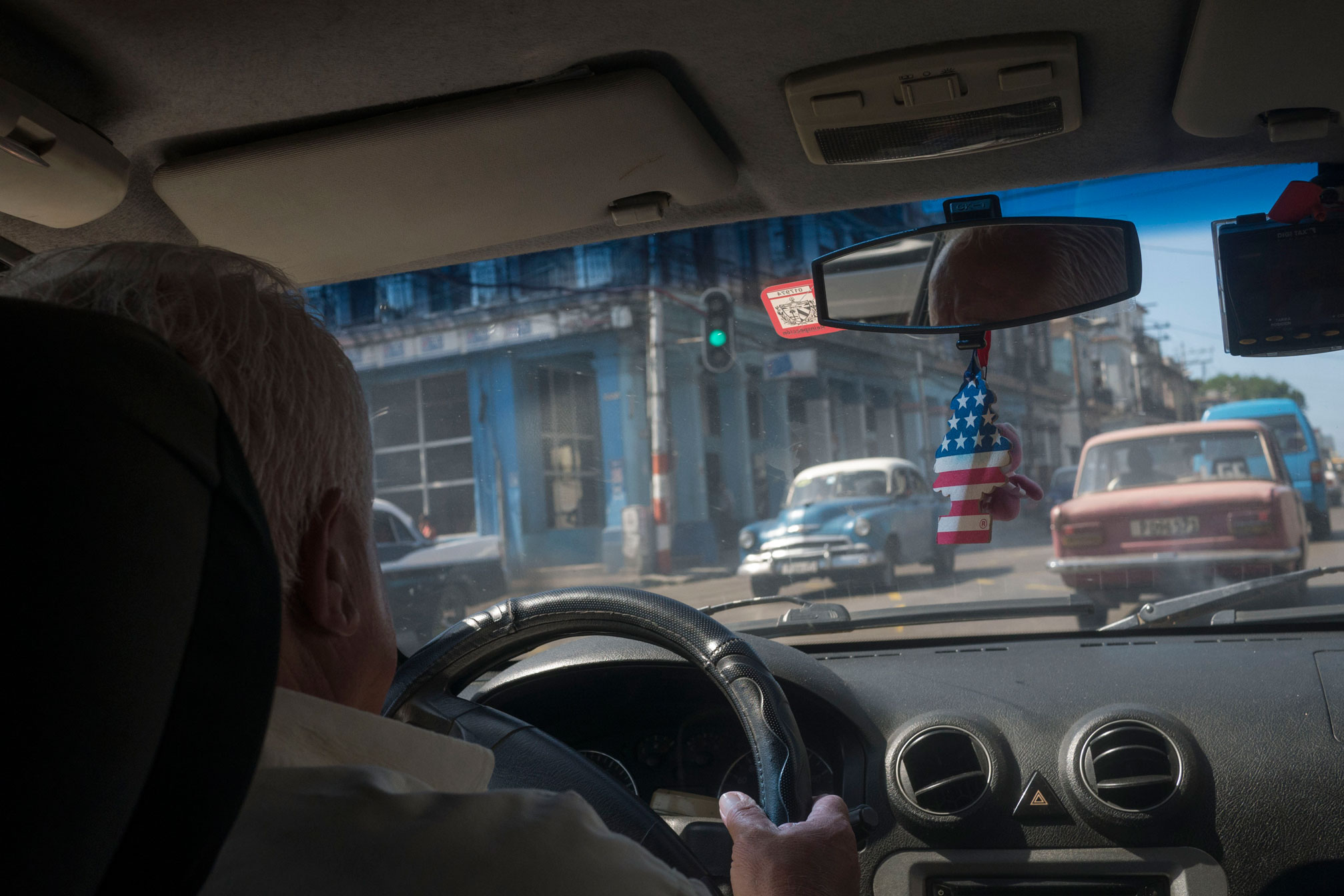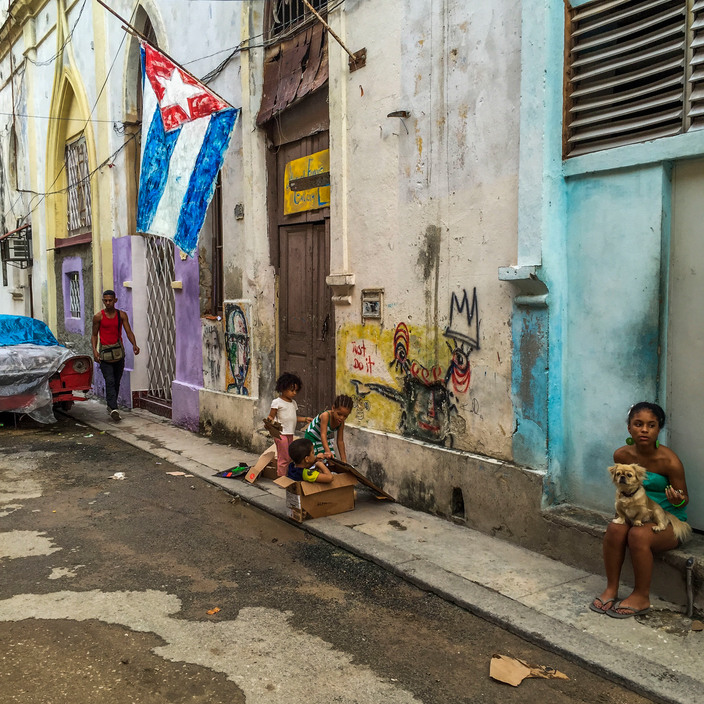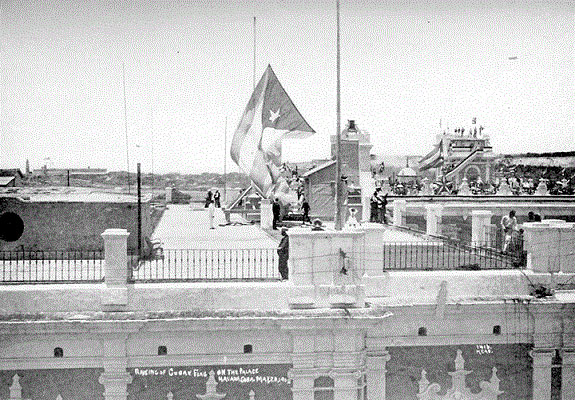The hoisting of the Star-Spangled Banner in Havana on Friday, for the first time in more than half a century, has been met with perplexing and contradictory reactions in the United States. Some commentators are joyfully predicting that the re-inauguration of the US embassy will unleash an invasion of tourists and business dollars, bringing badly needed capitalism to a place they view as backward and isolated. Others fear that this same invasion will push the island’s anachronistic charms out of existence. “Don’t miss your chance to experience Cuba before it changes,” urged an advertisement from Road Scholar this spring.
Such are the two faces of our simplified understanding of the Republic of Cuba: that only we in the US can save it, or that, by our very presence, we will inevitably destroy all the things that make it appealing to us. Neither view is shared by the Cuban people I talked to on the island this spring.
Cubans generally welcome stronger ties to the United States; indeed, the US is very present to most of them already. Everyone in Havana seemed to have seen the Grammy Awards within two days of their airing in the US. They watched it via paquete, the “sneakernet” that distributes the latest movies and TV on flash drives ferried to paying customers across the island. (Cuban broadband is a guy carrying a one-terabyte hard-drive around on a motorbike.) Cubans are well aware that the opening of the embassy does not end the embargo, or the US laws limiting travel to the island; that will require action by Congress. But the travel ban doesn’t mean total isolation for Cuba, which is already the second-largest tourist destination in the Caribbean, with legions of visitors from Canada, Germany, and many Latin American countries. While many Cubans worry about an increase in drug use and crime if the country’s borders become more open, no one I met feared their culture would succumb to rampant Americanization. “Ojalá!” (Would to God!) said a Havana innkeeper friend when the topic of ferry service across the Florida strait came up in February. (Three months later the US government granted licenses to four ferry companies, and one intrepid group has already put up a website, though the Cuban government hasn’t yet issued corresponding licenses of its own.)
Cuba has hardly been frozen in time since Fidel Castro’s 1959 revolution. There’s no better evidence of that than the old American cars that now fill the streets of Havana—and that are widely regarded as symptoms of the country’s fifty-five-year stasis. When I first visited in 2001, there were far fewer of the big Chevys and Fords around, and those were primarily to be seen near the fancy hotels: their gas-guzzling engines were prohibitively expensive to run. Since then, people have been swapping out the old Detroit engines for Japanese diesel motors. Diesel costs quite a bit less than gasoline in Cuba and the new engines get better mileage. The most immaculate and lavishly tricked out vintage autos are still reserved for tourists but many more—big as boats, they’re known as boteros—now constitute a legal, taxed, and individually-owned system of public transportation that is ubiquitous in Havana. For 10 pesos (about 40 cents) you can hop on board, if there’s room (the cars generally squeeze in six to eight passengers), and ask the driver to let you out at any point along the route.
In many of the boteros, pop music emanates from what looks like a mid-twentieth-century car radio, except for the flash drive sticking out of it. One car had a different approach: a Coke can with a flash drive in it was suspended on top of the dashboard. Music makes the customers happy, the driver explained, and he’d rigged this system to avoid the skipping that otherwise happened on bumpy roads. I marveled over el invento cubano and he became very serious. “No other people in the world could have survived what we went through here,” he said with grave pride. He was speaking of what’s known as the Special Period, which followed the collapse of the Soviet Union in 1991, when Cuba’s GDP plummeted by 34 percent and the entire population’s caloric intake declined so drastically that the average Cuban lost eleven pounds. Those who lived through it often refer to that disastrous time. The memory makes the dysfunctions and inconveniences of the present seem trivial—and the specter of increased Americanization hardly something to lose sleep over.
But there’s a more important reason Cubans aren’t concerned about a sudden surge of US influence on the island: they’ve lived through that story already, and it never quite ended.
Advertisement
Cuba was one of the islands Columbus claimed in 1492. By the time the first handful of English settlers arrived in Jamestown in 1607, the Spanish Empire had ruled Cuba for more than a century and the island had a population of 16,000, only a dwindling handful of whom were indigenous. Through the next 260 years, and even during Cuba’s three-decade struggle for independence in the late nineteenth century, Spain practiced its own form of embargo, maintaining the same tightly regulated trade monopoly in Cuba as in its other colonies.
For its part, the US government had had an eye on Cuba at least since the beginning of the nineteenth century, when Thomas Jefferson tried without success to buy the colony from Spain. Half a century later, a Venezuelan adventurer named Narciso López recruited a band of filibusters in the United States to invade the island. Supported by Mississippi Senator Jefferson Davis and others, López hoped to annex Cuba to the US as a slave state, thereby bolstering the Southern states’ clout in the Senate and averting the threat of civil war. The flag López created—red, white, and blue, with stripes and a star—flew for the first time in lower Manhattan in the year 1850, raised by The New York Sun over its headquarters at the corner of Nassau and Fulton Streets in a show of support for annexation.
López’s scheme failed, but commitment to slavery would remain an element of US-Cuba relations for some years thereafter. When Abraham Lincoln issued the Emancipation Proclamation in 1863, some Southern slaveholders headed for Cuba, abducting the African-Americans they considered their property along with them. The first act of the Cuban independence movement after it declared war on Spain in 1868 was to free the slaves under its jurisdiction, but the Spanish Empire devoted enormous resources to maintaining its last footholds in this hemisphere. The Cuban insurgents lost their first war of independence in 1878, and slavery remained legal on the island until 1886.
By that point, the flag the filibusters had brandished—“López’s flag” as the Cuban insurgency’s greatest leader, José Martí, called it—had become the banner of independence. The lives lost in its service transformed it from a petition for annexation into the flag of Cuban sovereignty. The great Cuban ethnomusicologist Fernando Ortiz coined a term for this complex cultural process, which he identified as a fundamental dynamic of Cuban history. He called it transculturación and believed that it grew out of the resilience of the Africans, brought to Cuba against their will, who coopted the alien cultural symbols available to them to create new and vibrant meanings from the unspeakable trauma they had endured. Ortiz’s favorite example of transculturación was the clave, the wooden shipbuilding peg that Africans doing forced labor in Cuban shipyards began using to beat out complex rhythms in what became a founding moment of Cuba’s rich musical tradition.
As Martí had always feared, the Cuban struggle for independence turned into a golden opportunity for the imperial ambitions of the ever-expanding United States. Following the rapid rout of Spain’s forces, the Stars and Stripes were hoisted by victorious US troops over the city hall of Santiago de Cuba in July of 1898. What we call the “Spanish-American War” —Cubans call it the “War of 1895,” the “War of Independence,” or the “Necessary War”—was over. The US flag soon flew all across Cuba and still did three years later when, in a daring move on New Year’s Eve, 1901, Santiago’s mayor Emilio Bacardi took it down and ran up the Cuban flag in its place.
Bacardi’s gesture was tolerated because the US government itself had embraced the same symbolism, deciding to back a formally independent Cuba. New York Times correspondent Dorothy Stanhope reported from Havana in May of 1902, “This morning I was there to see the Stars and Stripes lowered and the Cuban flag raised. The sight…will live forever in the memory of all who saw it.” The ecstatic Cubans who crowded onto rooftops to witness the event fervently hoped it marked the beginning of the sovereign nation they’d fought for so long to attain.
The warships duly steamed out of Havana’s harbor that day, but the americanos didn’t leave. The Stars and Stripes has flown over the naval base in the eastern province of Guantánamo since 1903, when Teddy Roosevelt’s administration extracted a hugely favorable lease from the fledgling Cuban government (in a treaty that stated that the base would be “for use as coaling or naval stations only, and for no other purpose”). US capital began flooding the country—according to historian Louis A. Pérez, Jr., within a quarter-century of Cuban “independence,” 75 percent of Cuba’s sugar crop was produced by US-owned mills—and the new Cuban constitution contained the notorious Platt Amendment stipulating that the United States could intervene in Cuba at will. And it did, for example by re-occupying the entire country for a second time from 1906 to 1909. The Platt Amendment remained in force until 1934, when Franklin Roosevelt rescinded it as part of the Good Neighbor Policy.
Advertisement
Anyone who’s ever seen The Godfather Part II knows that by the 1950s Cuba had become the geographic id of the United States. American Mob bosses had the run of the island while the dictatorship of Fulgencio Batista, with backing from Washington, advanced its own interests in the name of anti-communism, murdering thousands with impunity. When Fidel Castro stood on the balcony of Santiago de Cuba’s city hall on New Year’s Day, 1959, to proclaim victory for his revolutionary forces, he promised that “for the first time, truly, the Republic [of Cuba] will be entirely free.” Overhead, the flag Bacardi raised in 1902 still waved, and the hopes for true sovereignty that Bacardi raised with it were reborn.
Late one night this spring, I boarded an old Ford botero and discovered that its interior ceiling had been entirely reupholstered as a giant Cuban flag, meticulously stitched in red, white, and blue leather. When I asked the driver if I could take a photo, he obligingly switched on an elaborate system of bright white LEDs he’d installed all around the edge of the car to show off his handiwork to maximum advantage. Like all the botero drivers, he’s a cuentapropista, part of the burgeoning class of self-employed entrepreneurs that Cuban law has only begun to permit in the past few years. His engagement in the new economy clearly hasn’t dampened his nationalist ardor in the slightest.
Walk down any street in Cuba and you’ll also encounter riffs on the American flag. Reporters from the US have been surprised to note that Cubans like to sport shirts or leggings emblazoned with the flag of a nation that has embargoed their country for more than half a century. And why shouldn’t they? After all, the Cuban flag evolved from the same shapes and colors. None of us can say what any person means by the design on the t-shirt he happens to be wearing; it may be an expression of support for the Cuban government’s policy of normalization, an expression of antipathy for the Cuban government, or the proud showing off of a gift from an uncle in Rochester, New York, or a sister in Union City, New Jersey.
Nor is the Stars and Stripes the only such foreign imagery in play. Numerous Soviet-era Ladas tool around Havana amid all the Buicks and Packards, and the scarlet Soviet banner with its yellow hammer and sickle has become a Cuban symbol, as well. So has the logo of the Apple corporation, a twenty-first-century global fashion statement often seen on the boteros’ windshields. Cuba encompasses Spanish flamenco and the indigenous percussion instrument known as the güiro, baseball and European classical ballet, the Yoruba deity Lord Xangó and centuries-old Catholic cathedrals, the palaces of the Spanish viceroys and Abraham Lincoln, whose bust stands in the grand lobby of Havana’s Museum of the Revolution, in the same spot it has occupied since the building was Batista’s Presidential Palace. Which is to say: the United States is already part of Cuba, embargo or no embargo, and has been for a long, long time.




